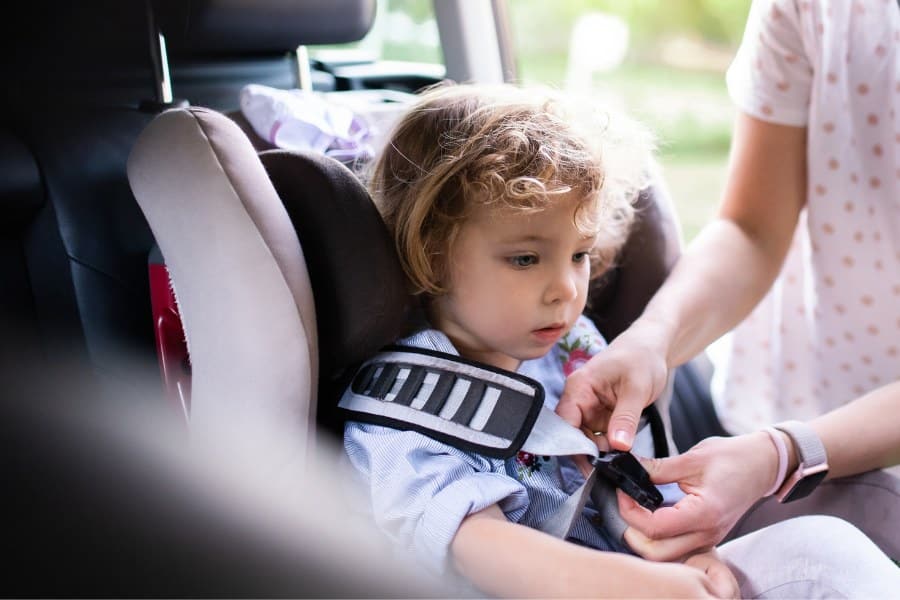Car Safety Tips for Family Road Trips
Road trips with the family are a fun way to mix things up and explore someplace new. It’s a nice break for you and a great way to make memories for your children.
Unfortunately, road trips involve many hours on the road and this can be dangerous.
You’re far more likely to encounter a serious hazard like distracted driving. To emphasize how dangerous this can be, over 2,800 deaths and 400,000 injuries linked to distracted driving occurred nationally in 2018.
If you want a smooth trip to ensure a positive experience for your family, you need to take road safety seriously.
Car Safety Tips
This entails a few specific strategies for long road trips, which we have some suggestions for tackling below.

Trip Preparation
An important starting point is to prepare for your trip beforehand. This has many parts to it and you must address them all to avoid any problems during your trip.
Firstly, you should ensure that your vehicle is safe to drive. This means having an inspection done and fixing any relevant concerns that are identified. Consider how long your trip is (both ways) and how that might prompt an earlier fix to something.
Secondly, you’ll want to have emergency supplies ready to go in your car. You never know what might happen despite having your car inspected and you don’t want to be without something necessary.
Pack supplies like extra water, a first aid kit, a flashlight, blankets, and tire chains if you plan on driving through the mountains.
Thirdly, you should have a plan ready for an emergency strike. Keep friends or family members informed of your travel plans and provide estimates of when you should arrive.
Additionally, consider insurance coverage for roadside assistance and have those contact numbers easily accessible.
Lastly, you’ll need to check the weather report. Poor weather can directly affect your drive and make an accident more likely.
Watch out for any chances of heavy rain, snow, fog, or otherwise stormy weather, and opt for safer roads or postpone your trip altogether.
Fatigue Management
You also need to find a way to manage your fatigue during a road trip.
Driving can be extremely exhausting with all the focus required and the stress of other drivers involved. Road trips involve a lot of driving, meaning more opportunities to lose focus and get into an accident.
Fatigue is particularly hazardous with driving and can even be as detrimental as driving while intoxicated. You cannot simply push through and expect everything to turn out okay if you are tired.
With this in mind, ensure that you get at least eight hours of sleep before your drive. Avoid driving for more than three hours without taking an extended break or have your partner take turns driving if you want to stay on the road.
You should also take breaks frequently to stretch your legs and use the bathroom. Making use of caffeine like coffee and energy drinks is also a good idea to help you stay alert.
Even if driving may seem mindless, it is taxing and your mind and body need rest. Prioritize this and the occupants of your car will be much safer during your road trip.
Distraction Minimization
Another crucial safety point involves the minimization of distractions.
It may seem like common sense to avoid distractions like cell phone use, but they can come in many forms and temptation is higher during a longer trip on the road. This means being proactive about anything that might distract you and preventing it.
During road trips in particular, kids can be a big distraction. They can get bored after sitting in a car for so many hours and this can result in them bothering you and requiring your attention.
Considering this, make sure to pack healthy snacks and entertainment that will last the entire ride. If anything goes wrong, pull over instead of trying to address the issue on the road.
When your passengers are occupied, you can keep your attention directly on the road.
Seatbelts and Carseats
It’s also important to make proper use of seatbelts and car seats if necessary. Seatbelts and car seats are both essential restraining mechanisms that directly reduce the severity of injuries during an accident.
For young children, a car seat or booster seat may be appropriate depending on how large they are. Make sure this seat is always placed in the backseat as well to further protect them.
For anyone big enough to use a seatbelt, it should be worn during the entire trip. Seatbelts may not always be comfortable, but they are the best way to prevent a fatality during a crash.
You can’t snap one on at a moment’s notice to keep yourself safe either, because you never know when an accident might happen.
Make sure everyone in the car understands that you are serious about safety. Never drive without everyone wearing a seatbelt and any young kids properly restrained in special seats.
Defensive Driving
A final safety technique you should employ during a road trip is defensive driving.
While driving, there’s a great possibility that you can get into an accident without any fault on your end. Other drivers are not always safe and their poor decisions can adversely impact you.
That said, if you are keeping an eye out for this then you might have time to take corrective action to avoid an accident. To drive defensively, you should constantly look at the road ahead of you and specifically at any nearby cars.
Watch for any unpredictable behavior like swerving, unsignaled lane change, speeding, and brake-checking. When you see anything dangerous, slow down and create distance for safety between you and a potentially dangerous driver.
By driving defensively, you’ll greatly reduce the chance of an accident caused by another driver while also ensuring good habits from yourself.
Closing Thoughts
While road trips are a time for excitement and adventure, the possibility of an accident is always around. More hours on the road means a greater number of other drivers you encounter and not all of them will be safe.
To ensure a safe trip for your passengers, you must address road trip safety head-on.
This entails adequately preparing for the trip beforehand, managing fatigue during the drive, minimizing distractions on the road, always using seatbelts and carseats (if necessary), and remembering to drive defensively.
You want your kids to have good memories, but an accident is a quick way to ruin any hope of that. Keep yourself and your kids protected by driving safely during all road trips.


